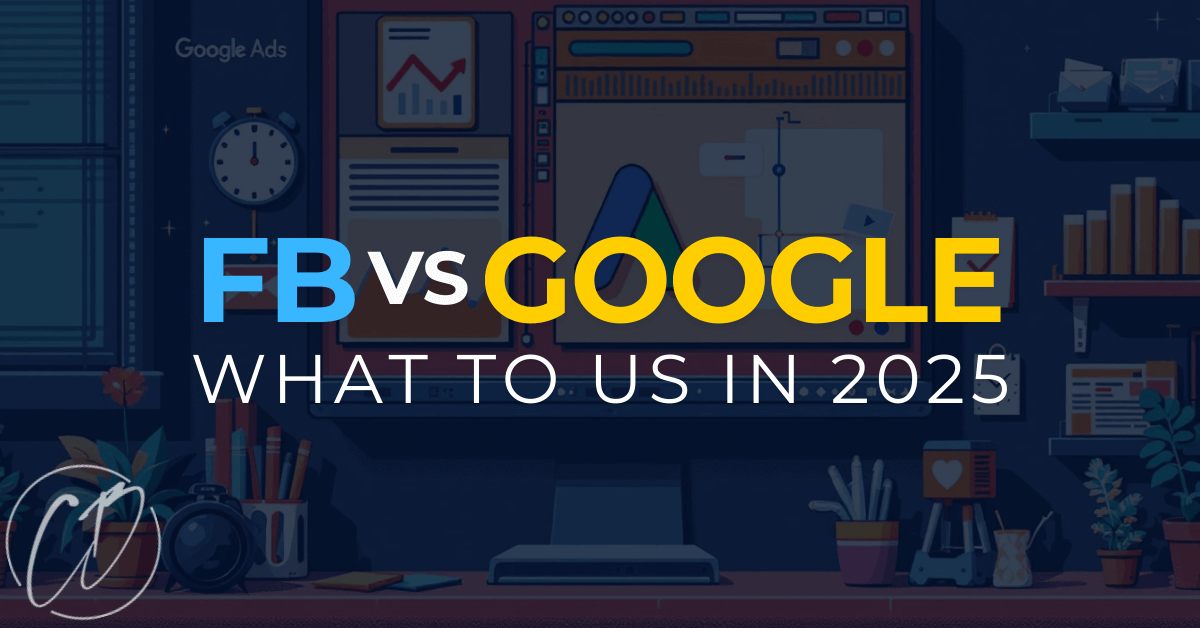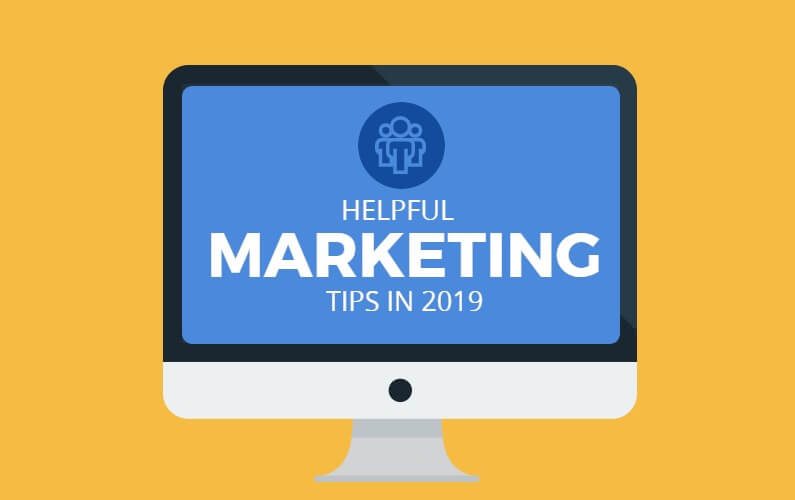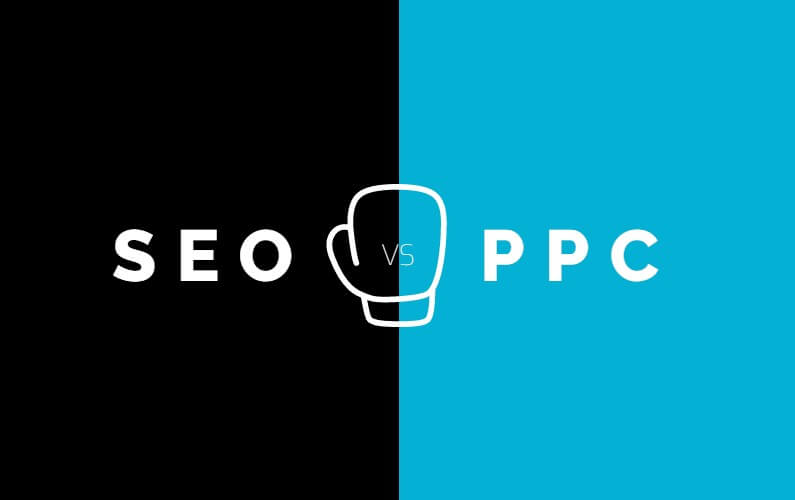Introduction
Today we are going to jump into something that I deal with alot with the marketing agency. My clients want to know where to best invest their hard earned money…
Deciding between Google Ads and Facebook Ads for your business might feel overwhelming.
With so many options available, it’s essential to zero in on the platform that aligns best with your goals. Both Google and Facebook hold significant spots in the advertising landscape, each offering unique benefits. So, what’s the real deal? Well, think about Google as the gateway for those already searching for what you offer, while
Facebook gets your message in front of people who didn’t even know they were curious yet. It’s not about which one is better; it’s about what works for your specific needs. Stick around to find out how each platform plays a different, yet crucial, role in getting your brand noticed and your sales buzzing.
I am going to start by explaining each platform, and then the differences of both. This isn’t a ‘How To’ run the ads, just pointing you in the direction of which you shall choose. I tend to shy away from ‘How-To’ style posts on this subject, as the backends of both Meta and Google always change – literally week to week, so I could create content on the HOW and in a week from then, it won’t be applicable…
Let’s begin, shall we!?
1. Understanding Google Ads
Ever wondered how some ads seem to know exactly what you’re thinking? That’s the magic of Google Ads at play—a powerful tool in the digital marketing toolkit.
If you’re a business owner trying to figure out if Google Ads is your ticket to success, you’re in the right place.
Let’s untangle the key features that make Google Ads a favorite choice in the great debate of Google Ads vs Facebook Ads.
Key Features of Google Ads
Google Ads isn’t just about plastering your brand name all over the internet—it’s a precision tool that helps reach the audience that matters most. Here’s what’s in the box:
•Pay-Per-Click (PPC)
Picture this: You only pay when someone clicks on your ad. Sounds fair, right? That’s the beauty of PPC. It’s like fishing with bait—only when a fish (or in this case, a potential customer) bites, do you need to pay.
This means you can manage your budget more effectively, making sure every dollar counts. It’s not just spraying and praying; it’s precision-targeting at its best.
• Extensive Reach
Google is like that giant billboard on the busiest street you can think of. With over 3 billion searches a day, you’d be hard-pressed not to find your audience.
Whether someone is searching for “vintage guitars” or “best coffee in town,” if you’re advertising on Google, you’ve got a real shot at reaching them. It’s like standing on the shoulders of a giant, shouting your message to the world!
• Search Intent Targeting
This is where Google Ads gets really smart. It doesn’t just show your ad to anyone with a pulse—it uses search intent to match your ads with people who are actively looking for what you offer. Imagine someone typing “running shoes for flat feet.” If you sell those, ka-ching! You’re right there when they’re ready to buy.
This level of targeting makes each interaction more meaningful, meaning you’re not just firing shots in the dark.
So, next time you’re pondering over Google Ads vs Facebook Ads, remember the strengths of Google Ads. With its PPC model, vast reach, and intelligent targeting, it’s no wonder it’s a top contender in the advertising arena. Whether you’re a small local shop or a booming online store, Google Ads can help tailor your message to the right folks.
And hey, if you play your cards right, that could mean not just more clicks, but more customers knocking at your virtual door!
2. Exploring Facebook Ads
When it comes to making a splash in the social media pond, Facebook Ads is your go-to fishing net. With billions of users scrolling through their feeds daily, it’s like having the biggest audience at your fingertips.
If you’re a business owner trying to decide between Google Ads vs Facebook Ads, this deep dive will help you see the unique features Facebook offers, so you can make an informed choice.
Key Features of Facebook Ads
Advanced Targeting Options
Imagine trying to catch a specific type of fish using a net that’s designed just for them. That’s what Facebook’s targeting options feel like. While Google Ads casts a wide net through keywords, Facebook lets you pinpoint exactly who sees your ads. Need to reach newlyweds, dog lovers, or marathon runners? Facebook has got you covered. You can target based on age, location, interests, and even life events, which means your ads land right in front of the most interested eyes.
Ad Formats
Facebook isn’t just about static words or banners—it’s a canvas ready for your creative strokes. You have a wide palette of ad formats to choose from, including:
- Images: Simple, yet powerful. Perfect for catching that initial glance.
- Videos: Tell a story, show a process, or just entertain. Video ads engage like no other.
- Carousels: Want to showcase multiple products or angles? Carousels offer a swipeable tour.
These formats provide a playground for creativity, allowing you to match the format with your business narrative.
Brand-Building Capabilities
Building a brand is like crafting an identity, and Facebook Ads are your digital sculpting tools. The platform’s emphasis on visual content helps you craft memorable ads that resonate with your audience.
Whether through a quirky cat video or a heartfelt story, your brand has the chance to create connections that last longer than just a swipe or click. Plus, since people interact with content on Facebook as part of their daily routine, your brand can become a familiar and trusted presence.
In a nutshell, Facebook Ads gives you control, creativity, and connection. It’s not just about reaching people; it’s about reaching the right people with the right message in a way that sticks. So, if your business goal involves painting a vivid brand picture, Facebook Ads might just be your best brush.
3. Google Ads vs Facebook Ads: Audience Reach and Demographics
In today’s digital advertising landscape, every business owner at some point stands at the crossroads of choosing between Google Ads vs Facebook Ads.
Each platform has its unique flavor and appeals to different segments of your target audience. By understanding how each one engages users, you can make a more informed decision. Let’s break down the specifics:
Audience Engagement on Google Ads
When you think about Google Ads, imagine walking into a store knowing exactly what you want—let’s say, a winter coat. Google Ads connect you with people who have a precise need. These users are actively searching for something specific, which means they’re already halfway through their customer journey. It’s like they’re waving a flashing “I want to buy” sign.
These searchers have intent-driven queries, meaning they’re looking for information, solutions, or products right then and there. When you tap into these searches, you’ve got a golden opportunity to meet high-purchase-intent customers right at the moment they’re ready to make a decision.
This direct approach is why keywords are so important in Google Ads. Each keyword is a tiny bridge to a potential customer. You can tailor your ads to target those searching for your specific offerings, ensuring your message hits just the right notes.
Audience Engagement on Facebook Ads
Now, let’s flip the switch to Facebook Ads. Picture yourself at a party where you’re meeting new people, sharing interests, and discovering new things.
Facebook taps into this social flow. It targets users based on their interests, behaviors, and even life events. The platform understands what grandma’s talking about in your friend’s comments or which cat meme you liked last week. It’s got a bead on user interests in a way that’s almost intuitive.
Facebook’s approach feels like striking up a conversation where you least expect it. By leveraging users’ social behaviors, it creates opportunities for more personalized and engaging advertising. Here, you’re not just showing up when they search. You’re part of the conversation they didn’t even know they wanted to have. This means your ads can naturally integrate into their browsing experience, becoming part of the scroll rather than an interruption.
So, which side are you on? Are you trying to catch the shopper with a shopping list, or would you rather spark curiosity during their evening scroll? As with all great debates, understanding which style fits your goals and audience is key to deciding the best platform for your advertising needs.
4. Google Ads vs Facebook Ads: Ad Formats and Visual Appeal
When it comes to advertising on Google or Facebook, the ad formats you choose can really make a difference in grabbing attention and engaging your audience. Both platforms offer something unique, but which one will suit your business best?
The answer? It all depends on what you’re aiming for. Let’s dive into the specifics of Google Ads and Facebook Ads to see which has the formats and the visual appeal that align with your business goals.
Google Ads Ad Formats
Google Ads isn’t just about appearing on search results. It’s a full toolkit of different ad types that can help you reach potential customers in various ways.
- Text Ads: These are typically seen on the Google Search results page. They’re all about the words, so crafting a catchy headline and description is key. Think of them like billboards made of text!
- Display Ads: Want more visuals? Display ads might be for you. These are banners you see while browsing websites within the Google Display Network. They can include images and are great for building brand awareness to a broad audience.
- Shopping Ads: Perfect for retailers, Shopping Ads display a product image, title, price, and store name right at the top of search results. This format is like having a mini-storefront on Google itself—talk about catching those last-minute shoppers.
Having these options lets you choose how best to show off your products or services. Whether you rely on text-heavy ads or want to catch eyes with visuals, Google has the format for you.
Facebook Ads Ad Formats
Facebook Ads, on the other hand, is all about standing out with vibrant and engaging content. Unlike Google’s text-first ads, Facebook’s formats center around visuals to captivate users as they scroll through their feeds.
- Image Ads: The classic choice. These single-image ads come with a caption and a call-to-action. They’re like a quick spotlight on your product or service—short and sweet.
- Carousel Ads: Carousel ads let you showcase multiple images or videos in a single ad. Imagine flipping through a mini-catalog—in a space where you’re usually swiping through friends’ photos.
- Video Ads: Videos can be more engaging than static images. They auto-play in users’ feeds and can be as short as a few seconds, grabbing attention and highlighting your brand personality instantly.
Exploring these ad formats can make Facebook a playground for creativity. If you want to tell stories, show off products in action, or just make your brand pop visually, Facebook is your canvas.
In the battle of Google Ads vs Facebook Ads, each platform offers something unique for businesses hoping to capture their audience’s attention. Google provides a more search-intent-driven approach, while Facebook brings social and visual storytelling to the forefront. Consider what suits your business’s story best, and go from there!
5. Cost Comparison: Google Ads vs Facebook Ads
When you’re jumping into the waters of digital advertising, one of the first big questions is often about cost. “How much should I spend?” and “Am I getting my money’s worth?” are questions that weigh on every business owner’s mind. The great duel—Google Ads vs Facebook Ads—is not only about which platform reigns supreme but also about making sure you’re getting the best bang for your buck.
Understanding CPC and CPM
Picture this: Google Ads operates like a bustling marketplace where you’re charged every time a curious shopper clicks on your stall. This is known as the cost-per-click (CPC) model. It’s straightforward—if no one clicks, you don’t pay. This can be a relief if your goal is to drive traffic directly to your site.
On the other hand, Facebook Ads takes a different approach. It’s more like putting up a billboard in Times Square (but without the hefty price). You’re charged based on how many eyeballs see it—this is called cost-per-impression (CPM). Even if folks don’t click immediately, you’re still building brand awareness, piece by piece.
So, which is better? Well, it depends on your goals. If you want immediate engagement and are willing to pay for actions (like website visits), Google’s CPC might be your go-to. But if brand presence is your aim, Facebook’s CPM could help you reach a broader audience.
Budgeting Strategies for Each Platform
Setting a budget isn’t just about numbers—it’s about aligning those numbers with your goals. Let me break it down:
- For Google Ads:
- Identify Your Keywords: Spend time finding the right keywords. This will help cut costs and attract the right crowd.
- Start Small: Test with a lower budget—not only will this keep your spending in check, but it’ll give you a clearer picture of what works.
- Focus on High Conversion Rates: Allocate more funds to campaigns or keywords that are showing positive results.
- For Facebook Ads:
- Audience Targeting: Use Facebook’s detailed audience settings to zero in on exactly who you want to see your ads. This precision can save you lots of cash.
- Experiment: Try a mix of video, carousel, and image ads to see which format resonates more with your audience.
- Cap Your Spend: Use Facebook’s daily or lifetime budget settings to ensure you don’t exceed your planned spending.
Remember, there’s no one-size-fits-all approach. It’s all about testing and tweaking until you strike gold. Just like making a good stew, you need to find the right ingredients—sometimes it’s a dash more seasoning, other times it might need a gentle touch of heat. Don’t be afraid to adjust the recipe as you go along.
6. Choosing the Right Platform for Your Business
In the showdown of Google Ads vs Facebook Ads, picking the right platform for your business can feel like choosing between peanut butter and jelly—each has its own flavor and works best in different situations. Whether you’re aiming to reach a broad audience or want to target specific interests, knowing when to use each platform can make all the difference.
When to Use Google Ads
Imagine you’re fishing in the ocean, a sea filled with potential customers looking for something specific. That’s Google Ads. Here are some scenarios where it shines:
- High Purchase Intent: If your product or service solves a direct problem, Google Ads is your spotlight. Users are searching for solutions and ready to act.
- Local Targeting: If you’re a local business looking to attract nearby customers, Google Ads can target specific areas, ensuring your message reaches the right doorstep.
- B2B Marketing: Businesses searching for services often turn to Google first, making it ideal for B2B strategies, where decision-makers search for what they need.
- Product Searches: With Google Shopping ads, your products can appear at the top of search results. This is perfect for e-commerce brands with wide product ranges.
When to Use Facebook Ads
Facebook Ads are like hosting a party where you already know everyone in the room. It’s cozy, social, and perfect for building connections. Here’s when it might be your best bet:
- Brand Awareness: If your goal is to introduce your brand to a wide audience, Facebook offers a stage. With visual storytelling, you can create memorable experiences.
- Targeted Interests: Facebook’s targeting is like having a sniper’s precision. If you know specific interests your audience has, you can hone in with impressive accuracy.
- Engagement Goals: Want more likes, shares, and comments? Use Facebook’s interactive ad formats to encourage engagement and start conversations.
- Visual Content: If your product shines through photos or videos, Facebook’s creative ad formats let you show it off in style with carousels and immersive experiences.
Choosing between Google Ads and Facebook Ads can feel like a balancing act. Each platform has its own set of strengths. Understanding these can help tailor your advertising strategy to fit your business like a glove. Keep your business goals in mind and choose the platform that aligns with your vision and customer behaviors. Remember, sometimes a combo of both might just be the secret sauce you need!
Conclusion
When it comes to running ads for your business, choosing between Google Ads and Facebook Ads boils down to aligning your campaign with your specific goals.
Google Ads is your go-to when you’re aiming to capture people who are actively searching for what you offer. Its massive reach and targeted keyword strategy make it perfect for boosting conversions from folks who already have a high purchase intent.
On the flip side, Facebook Ads shine when you’re looking to engage with potential customers on a more personal level. With its advanced targeting features and ability to create visually captivating content, Facebook is ideal for building your brand and driving awareness among specific audience groups who might not yet know they need you.
Both platforms have unique strengths, and your decision should reflect your business objectives and which strategy resonates most with your audience. So, have a think about your target market and what message you want to send, then choose the channel that aligns best with those goals.
Thanks for joining me on this exploration of Google Ads vs Facebook Ads! I’d love to hear which platform you’re leaning towards—reach out to me over at my Award Winning Marketing Agency by hitting the button below. Keep an eye out for future posts where we’ll dive deeper into each platform to help maximize your ad success.
I really hope this helped you make a decision / pointed you in the right direction for which platform to jump into…
Take it and run with it.
– Cam









